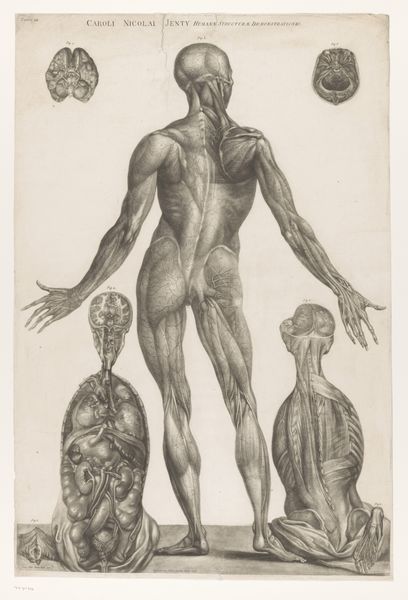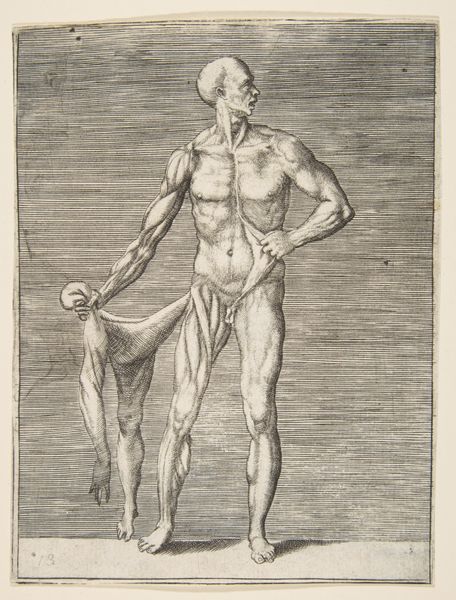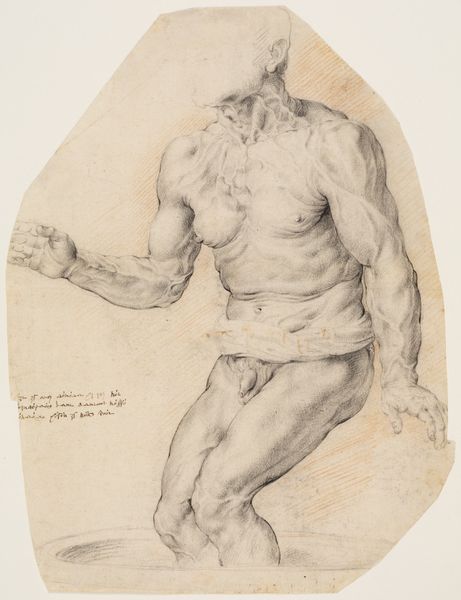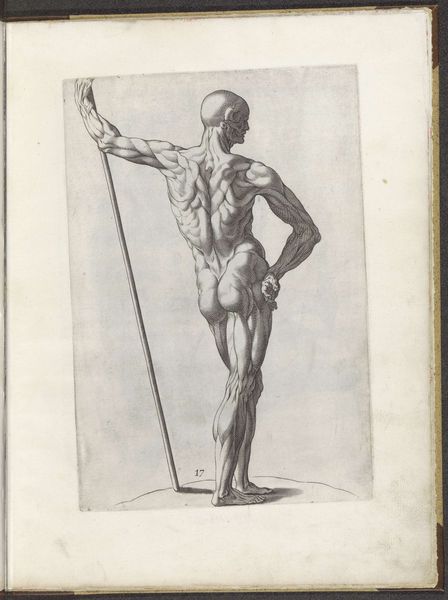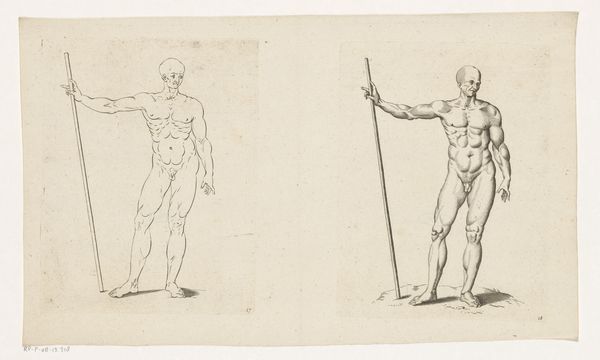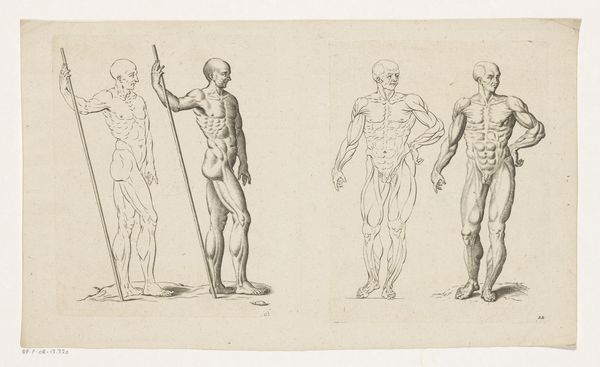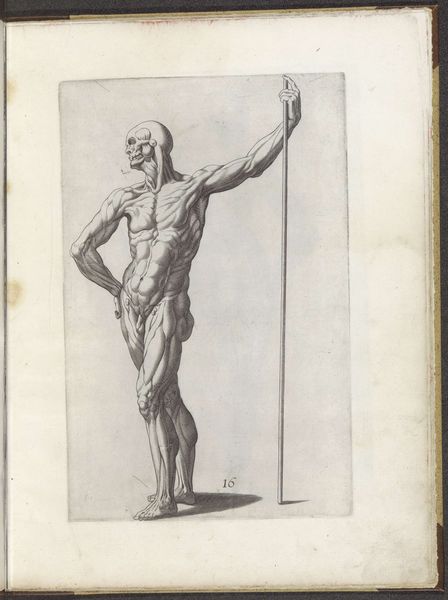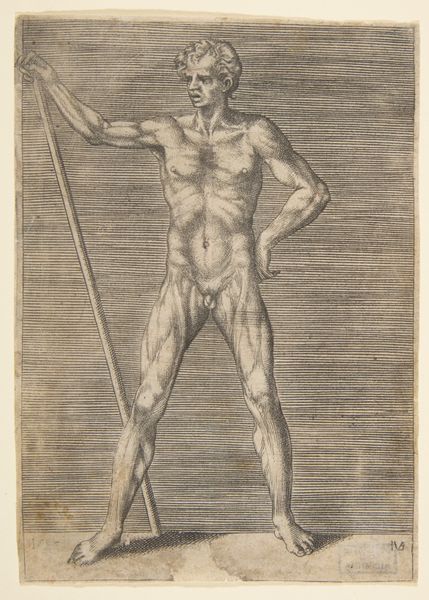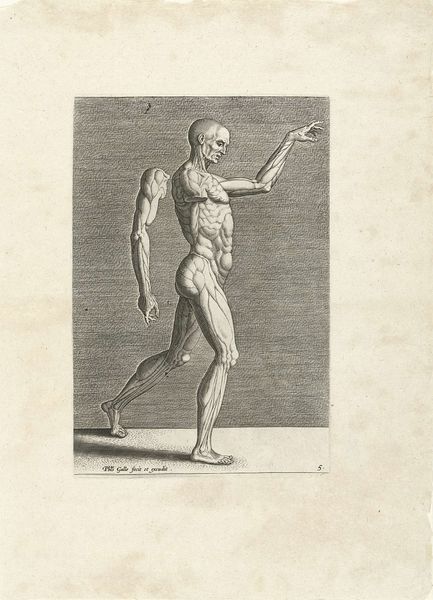
Dimensions: height 899 mm, width 604 mm
Copyright: Rijks Museum: Open Domain
Charles Spooner created this anatomical study as an engraving, a printmaking technique, sometime in the mid-18th century. Such images were produced for the consumption of medical students. You could call it, in a way, a form of medical advertising. By the 1700s the medical profession was becoming more formalized. The engraving demonstrates the rise of scientific rationalism and the increasing emphasis on empirical observation and anatomical study. Images like this reflected, and helped to create, a worldview in which the human body was understood as a complex machine to be dissected, analyzed, and ultimately controlled. The historical context is crucial here. The Enlightenment was well underway and institutions for learning such as medical schools were expanding. The social conditions of art had shifted significantly. The artist was no longer working solely for the church or court, but increasingly for the market. Understanding the context of this shift is essential. The historian, consulting sources such as medical texts and institutional records of the time, can enrich our understanding of this artwork.
Comments
No comments
Be the first to comment and join the conversation on the ultimate creative platform.
